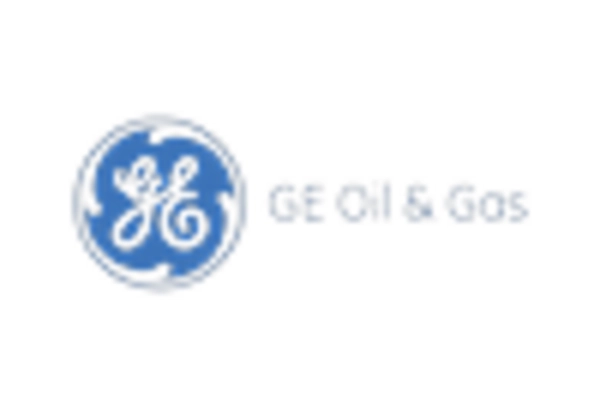Increasing Demand for Oil and Gas
The Oil Gas Defoaming Separator Market is experiencing a surge in demand due to the rising global energy needs. As economies expand, the consumption of oil and gas continues to grow, necessitating efficient separation technologies. The International Energy Agency projects that global oil demand could reach 104 million barrels per day by 2026. This increasing demand drives the need for advanced defoaming separators, which are essential in maintaining the quality and efficiency of oil and gas extraction processes. Furthermore, the growing number of oil and gas exploration projects worldwide contributes to the expansion of the Oil Gas Defoaming Separator Market, as operators seek to optimize production and reduce operational costs.
Rising Focus on Operational Efficiency
The Oil Gas Defoaming Separator Market is witnessing a heightened emphasis on operational efficiency among oil and gas companies. As competition intensifies, operators are increasingly seeking ways to optimize their processes and reduce costs. Effective defoaming solutions are critical in achieving these objectives, as they enhance the separation process and minimize product loss. Companies that implement advanced defoaming separators can experience significant improvements in their overall productivity. Market analysis indicates that firms investing in operational efficiency technologies are likely to see a return on investment within a short period, thereby driving the growth of the Oil Gas Defoaming Separator Market.
Expansion of Oil and Gas Infrastructure
The expansion of oil and gas infrastructure is a key driver for the Oil Gas Defoaming Separator Market. As new pipelines, refineries, and processing plants are constructed, the need for effective separation technologies becomes increasingly apparent. This infrastructure development is often accompanied by the need for modern defoaming solutions that can handle varying production conditions. Reports suggest that investments in oil and gas infrastructure are projected to exceed 1 trillion dollars over the next decade. This influx of capital is likely to stimulate demand for defoaming separators, as companies seek to enhance their operational capabilities and ensure compliance with industry standards.
Regulatory Compliance and Environmental Standards
The Oil Gas Defoaming Separator Market is significantly influenced by stringent regulatory frameworks aimed at minimizing environmental impact. Governments and regulatory bodies are enforcing laws that require oil and gas companies to adopt technologies that reduce emissions and waste. Compliance with these regulations often necessitates the use of advanced defoaming separators, which help in managing foam and ensuring cleaner production processes. The Environmental Protection Agency has set forth guidelines that encourage the adoption of such technologies, thereby driving market growth. As companies strive to meet these standards, the demand for effective defoaming solutions is likely to increase, further propelling the Oil Gas Defoaming Separator Market.
Technological Innovations in Separation Processes
Technological advancements play a pivotal role in shaping the Oil Gas Defoaming Separator Market. Innovations in materials and design have led to the development of more efficient and durable separators. For instance, the introduction of smart separators equipped with sensors and automation capabilities enhances operational efficiency and reduces downtime. According to industry reports, the market for advanced separation technologies is expected to grow at a compound annual growth rate of 6.5% over the next five years. These innovations not only improve the performance of defoaming separators but also contribute to cost savings for operators, making them a vital component in the oil and gas sector.

















Leave a Comment